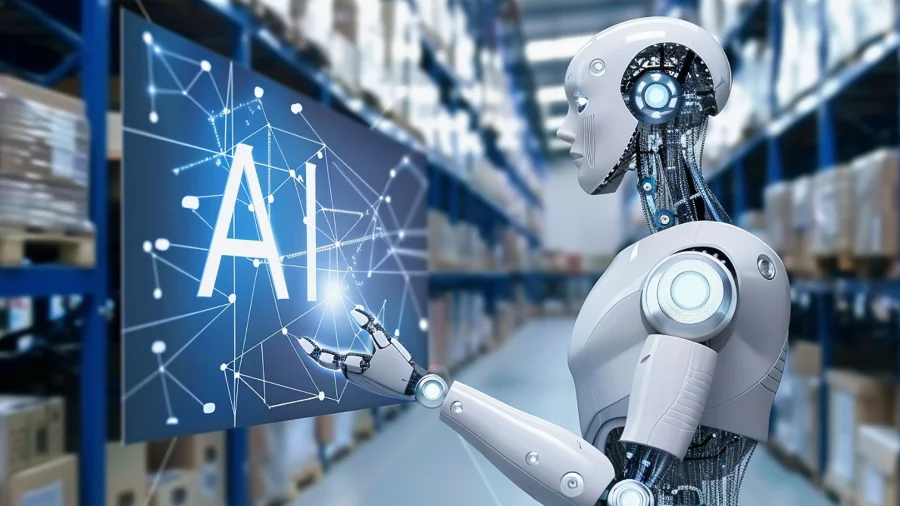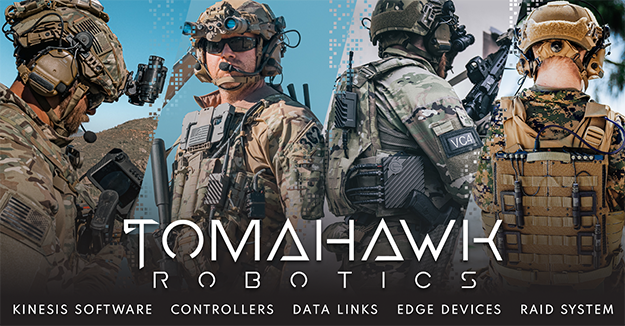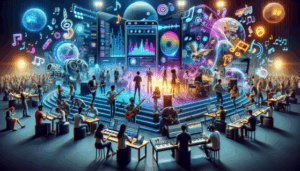The New Arms Race: Big Tech’s Strategic Push into General-Purpose Robotics
The field of robotics is undergoing a seismic shift, marking a pivotal moment in the evolution of artificial intelligence and automation. For decades, robots were largely confined to the structured, predictable environments of factory floors—powerful but inflexible machines executing a single, repetitive task with precision. Today, a new frontier is opening up, driven by breakthroughs in AI. This is the era of General-Purpose Robotics (GPR), and the world’s largest technology companies are in an undeclared arms race to dominate it. We are witnessing a massive consolidation of talent and resources, as tech giants strategically acquire specialized startups and poach top-tier researchers to build the next generation of intelligent machines. This trend is more than just a series of business transactions; it’s a fundamental reshaping of the innovation landscape, with profound implications for everything from global supply chains to the smart homes of tomorrow. This consolidation is a leading indicator of where the future of consumer and industrial technology is headed, impacting the latest in Robotics News and beyond.
Section 1: From Specialized Tools to Autonomous Agents: The GPR Revolution
The core ambition driving this consolidation is the quest to build truly autonomous, general-purpose robots. Unlike their predecessors, these machines are not designed for one specific job. Instead, they are envisioned as versatile agents capable of perceiving, reasoning about, and acting within complex, unstructured human environments. This is the difference between a robotic arm that welds a car door and a robot that can tidy a messy room, assemble furniture from a manual, or assist an elderly person with daily tasks.
The Three Pillars of Modern Robotics
Achieving this level of autonomy rests on solving immense challenges across three interconnected domains. The progress in these areas, often highlighted in AI Research / Prototypes News, is what makes GPR feasible for the first time.
1. Advanced Perception: A robot must be able to see and understand its surroundings with human-like nuance. This goes far beyond simple object detection. It involves semantic understanding (knowing a “cup” is for drinking and is fragile), 3D spatial awareness, and the ability to function in dynamic lighting conditions. The latest developments in AI-enabled Cameras & Vision News, powered by sophisticated neural networks and a fusion of data from various sources like LiDAR and depth sensors, are the eyes of these new machines. This technology is closely related to advancements seen in AI Cameras News for security and mobile devices.
2. Dexterous Manipulation: One of the hardest problems in robotics is replicating the dexterity of the human hand. A GPR must be able to handle a vast array of objects—from a soft piece of fruit to a heavy power tool—with appropriate force and grip. This requires sophisticated end-effectors (robotic hands), intricate feedback from AI Sensors & IoT News embedded within them, and AI models trained to generalize manipulation skills across countless objects and tasks.
3. Embodied Reasoning: This is the AI “brain” that connects perception to action. The robot must be able to take a high-level command like “clean the kitchen” and break it down into a sequence of physical actions. It needs to plan its movements, predict the consequences of its actions, learn from trial and error (often through reinforcement learning in simulation), and adapt when things don’t go as planned. This cognitive architecture is where large language models (LLMs) and vision-language models (VLMs) are beginning to play a transformative role, allowing for more natural human-robot interaction and complex problem-solving.

Section 2: The “Acqui-Hire” Playbook: Why Talent is the New Capital
In this high-stakes environment, the most valuable asset isn’t hardware; it’s the human talent capable of building the software and AI models that bring the hardware to life. Tech giants have recognized that acquiring a small, elite team of robotics researchers can be more valuable than years of in-house development. This strategy, often termed an “acqui-hire,” is about absorbing intellectual capital and accelerating the research and development roadmap.
The Strategic Value of an Acquired Team
When a large corporation like Amazon, Google, or Microsoft acquires a robotics startup, they gain several critical advantages that are difficult to build from scratch.
- Concentrated Expertise: A startup team often represents years of focused, collaborative research on a very specific, difficult problem, such as robotic grasping or simultaneous localization and mapping (SLAM). This collective knowledge is a powerful accelerator.
- Proprietary Technology and Data: These teams bring with them unique algorithms, software stacks, and, crucially, valuable datasets used for training AI models. In machine learning, the quality and uniqueness of data are often the biggest differentiators.
- Proven Synergy: The team has already demonstrated an ability to work together effectively to innovate. Integrating this pre-formed, high-functioning unit into a larger R&D organization can inject a potent dose of agility and entrepreneurial spirit.
- Recruitment Magnet: Acquiring a team led by well-respected figures in the AI and robotics community acts as a powerful signal, attracting even more top talent to the company. It creates a center of gravity for innovation.
Case Study: The Power of Corporate Resources
Consider a hypothetical startup that has developed a novel reinforcement learning algorithm for robotic arm manipulation but is limited by its access to computational resources. After being acquired by a tech giant, that same team now has access to a virtually unlimited cloud computing infrastructure. They can run thousands of parallel simulations, drastically reducing the time it takes to train their models. They can leverage the corporation’s vast, real-world datasets from its logistics operations or consumer devices to fine-tune their algorithms. This synergy—combining startup agility with corporate scale—is the core logic behind the consolidation trend. It’s a strategy that will ultimately influence everything from Autonomous Vehicles News to the development of next-gen AI Assistants News.
Section 3: From Warehouse to Your House: The Trickle-Down Effect of GPR Research
While the immediate focus for many of these corporate labs is on solving large-scale industrial problems like warehouse automation, the long-term vision is far broader. The foundational technologies being developed for GPR will inevitably trickle down, creating and transforming entire categories of consumer and commercial products.
The Commercial Proving Ground: Logistics and Manufacturing
Amazon’s fulfillment centers are a prime example of a real-world laboratory for robotics. Robots are already sorting packages, moving inventory shelves, and beginning to handle individual items. The data and experience gained from deploying robots at this massive scale are invaluable. Each successful pick-and-place operation provides data that can be used to train more robust models, creating a virtuous cycle of improvement. This industrial application is a direct precursor to robots that can one day perform similar tasks in more chaotic environments, like stocking shelves in a retail store or even organizing your pantry. The navigation and safety systems perfected here will inform future Smart City / Infrastructure AI Gadgets News and public-facing autonomous systems.
The Future of the Smart Home and Personal Devices
The ripple effect into consumer technology will be profound. The core research being done today will power the next wave of smart devices, making them more proactive, context-aware, and physically capable.
- Home Robotics: The advancements will go far beyond what we see in current Robotics Vacuum News. Imagine an AI Personal Robot that can not only vacuum but also pick up toys, load the dishwasher, or even bring you a drink. This requires the same perception and manipulation technology being honed in warehouses.
- Smart Appliances: The future of Smart Appliances News and AI Kitchen Gadgets News involves robots that are integrated into the environment. A robotic arm could emerge from the countertop to assist with cooking, or a smart refrigerator could not only track inventory but also physically rearrange items for better access.
- Health and Accessibility: Perhaps the most impactful application will be in assistive technology. The research will fuel breakthroughs in Health & BioAI Gadgets News and AI for Accessibility Devices News, creating robots that can help the elderly live independently for longer or assist individuals with mobility challenges.
- Entertainment and Companionship: The technology will also redefine play and interaction, leading to more sophisticated AI Toys & Entertainment Gadgets News and even emotionally intelligent AI Companion Devices News and AI Pet Tech News.
Furthermore, the underlying perception systems will enhance a wide range of products, from AI Security Gadgets News that can distinguish between a pet and an intruder with near-perfect accuracy, to AR/VR AI Gadgets News that can seamlessly map and interact with the real world.
Section 4: The Consolidation Conundrum: Progress at What Price?
The trend of top robotics talent and IP being absorbed by a handful of giant corporations is a double-edged sword. It presents both immense opportunities for accelerating progress and significant challenges that warrant careful consideration.

Pros and Opportunities
- Unprecedented Acceleration: With access to massive funding, computing power, and real-world testing grounds, these consolidated teams can tackle robotics’ grand challenges at a pace and scale previously unimaginable.
- Ecosystem Integration: Big Tech can seamlessly integrate robotic capabilities into their existing ecosystems of smart devices, cloud services, and AI assistants. An advanced robot could be controlled via the same voice assistant that manages your AI Lighting Gadgets News and AI Audio / Speakers News.
- Solving Real Problems at Scale: These companies have the logistical and financial might to deploy robotic solutions globally, addressing major issues like supply chain efficiency, labor shortages, and elder care. This can also lead to innovations in niche areas like AI Gardening / Farming Gadgets News.
Cons and Potential Pitfalls
- Stifling Competition: When the most promising startups are quickly acquired, it can create a less diverse ecosystem. This may reduce the number of independent, disruptive ideas and concentrate market power in the hands of a few incumbents. – Brain Drain from Academia: The lucrative salaries and unparalleled resources offered by Big Tech can pull top professors and graduate students away from universities, potentially slowing down fundamental, open-ended research that isn’t tied to a specific product roadmap.
- Ethical and Societal Concerns: Concentrating the development of powerful, autonomous systems within a few corporations raises critical questions about data privacy, algorithmic bias, job displacement, and the responsible deployment of AI. Who sets the ethical guidelines for a robot that operates in your home?
Best Practices and Considerations for the Future
To mitigate these risks, a balanced approach is needed. Encouraging industry-academia partnerships, supporting open-source robotics platforms (like ROS), and fostering public dialogue about ethical standards are crucial steps. For developers and engineers, focusing on building robust, safe, and interpretable AI systems is paramount. For policymakers and the public, staying informed about the implications of these trends, from AI in Sports Gadgets News to AI Office Devices News, is essential for shaping a future where robotics benefits all of society.
Conclusion: Engineering the Robotic Future
The ongoing consolidation in the robotics industry is a clear and powerful signal: the era of general-purpose, AI-driven robots is no longer a distant sci-fi dream but an active, high-stakes engineering challenge. By acquiring the brightest minds and most innovative startups, tech giants are placing a multi-billion-dollar bet that they can solve the core problems of perception, manipulation, and reasoning. This strategic push will accelerate progress at an astonishing rate, with the technologies developed in elite labs today set to redefine our industries and daily lives tomorrow. The journey from the lab to the living room will be complex and fraught with challenges, but the convergence of talent, capital, and computation has set the stage for a truly robotic revolution. The Robotics News of today is not just about new gadgets; it’s about the construction of a new reality.










